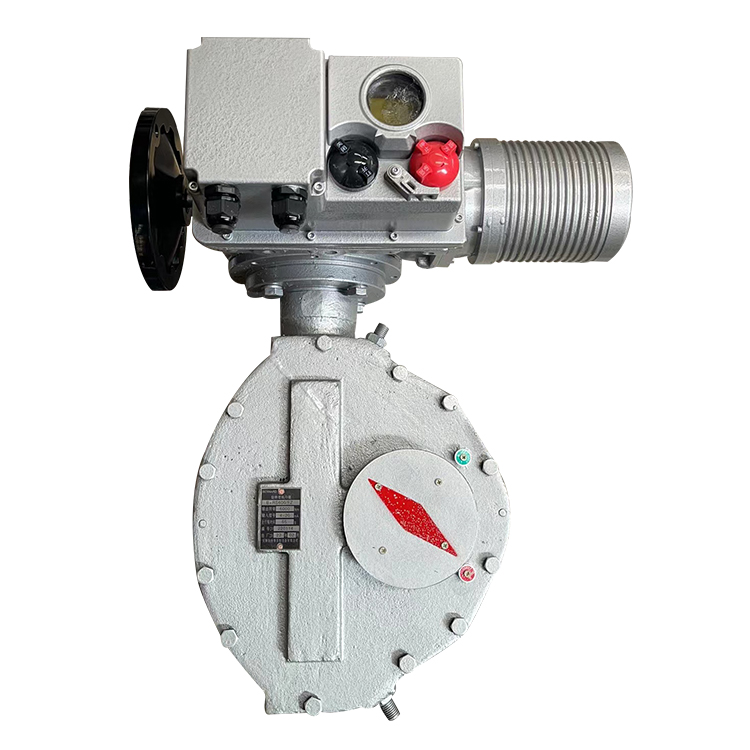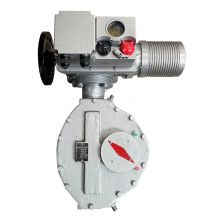Home > Company News > Description of various types of electric actuators
Company News

Actuators have two types, which are generally divided into part-turn Electric Valve actuators. And multi-turn Electric Valve actuators. The former mainly controls valves that require partial rotation, such as ball valves and butterfly valves, while the latter requires multi-turn valves, such as gate valves.
Multi - rotary actuator driven by electric power is one of the common and reliable actuator types.Single-phase or three-phase motors are used to drive gears or worm gear to drive stem nuts that move the stem to open or close the valve. Multi-rotary electric actuator can drive large size valves quickly. To protect the valve from damage, a limit switch installed at the end of the valve stroke will cut off power to the motor, as will a torque sensing device, a position switch is used to indicate the valve on/off status, and a handwheel mechanism installed with the clutch device can manually operate the valve in the event of a power failure.
The main advantage of this type of actuator is that the components are installed in a housing, in this waterproof, dustproof, explosion-proof housing integrated with basic and advanced functions. The main disadvantage is that when power fails, the valve can only be kept in place and the fault position (fault on or fault off) can only be achieved using a backup power system.
This actuator is similar to the electric multi-rotation actuator, the main difference is that the actuator output is 1/4 rotation 90 degrees of motion. The new generation of electric single-turn actuators combines the complex functions of most multi-turn actuators, such as parameter setting and diagnostic functions using a non-intrusive user friendly interface. Single-turn actuators are compact and can be fitted to small valves, typically with output torque of up to 800 kg m, and they can be fitted with batteries for failure operations because they require less power.
Select elements
The following factors should be considered in selecting an appropriate valve actuator type and specification:
Drive energy
The commonly used driving energy is power supply or fluid source, if the power supply is selected as the driving energy, three-phase power supply is generally selected for large size valves, and single-phase power supply can be selected for small size valves. General electric actuator can have a variety of power supply types to choose from.
Sometimes the DC power supply can be used. In this case, you can install batteries to handle power failures. There are many kinds of fluid sources, which can be different media such as compressed air, nitrogen, hydraulic fluid, etc. Secondly, they can have a variety of pressures, and the third actuator has a variety of sizes to provide the output force active moment.
The valve type
When choosing valve actuator, know the type of valve, so that you can choose the correct actuator type. Some valves require multi-turn drive, some require single turn drive, and some require reciprocating drive, which affects the choice of actuator type. Usually multi-rotary pneumatic actuator is more expensive than the electric multi-rotary actuator, but the pneumatic actuator with reciprocating direct stroke output is cheaper than the electric multi-rotary actuator.
Torque size
For 90 degree turn valves such as ball valves, disc valves and plug valves, the corresponding valve torque size is obtained from the valve manufacturer. Most valve manufacturers test the required operating torque of the valve at rated pressure and provide this torque to the customer.
For multi-turn valves the situation is different, these valves can be divided into: reciprocating (lifting) movement - stem does not rotate, reciprocating motion - stem rotation, non-reciprocating - stem rotation, stem diameter, stem connection thread size has determined the actuator specifications.
Actuator selection
Once the actuator type and the required driving torque of the valve are determined, the data sheet or selection software provided by the actuator manufacturer can be used for selection. Speed and frequency of valve operation may also be considered.
Fluid-driven actuators can adjust travel speed, but three-phase electric actuators only have fixed travel time.
Some small dc electric single rotary actuator can adjust the travel speed.
-
Sand Water Filter/Water treatment plants
-
Automatic Doypack Seal Machine (insert and sealing machine)
-
IPX3/IPX4 Hand-held Water Spray Nozzle Test Device IEC 60529
-
IPX5,IPX6 Jet Nozzle of IEC 60529, Brass material
-
Adjustable and multifunctional Spring Impact Hammer IK01-IK07 Level Tester
-
Test probe 43 IEC 61032-Probe 43-Figure 17 Jusdtest
-
IEC61032-Probe 41-Figure 16 Test probe 41
-
IEC61032-Probe 32-Figure 15 Test probe 32
-
Test probe 31 IEC61032-Probe 31-Figure 14
-
Jointed Child Finger Probes IEC 61032-Probe 19-Figure 13 R 2.5±0.05 mm
-
Test probe 18 of IEC 61032 R4.3mm Jointed Child Finger Probes
-
Digital recorder for Lugeon testing


